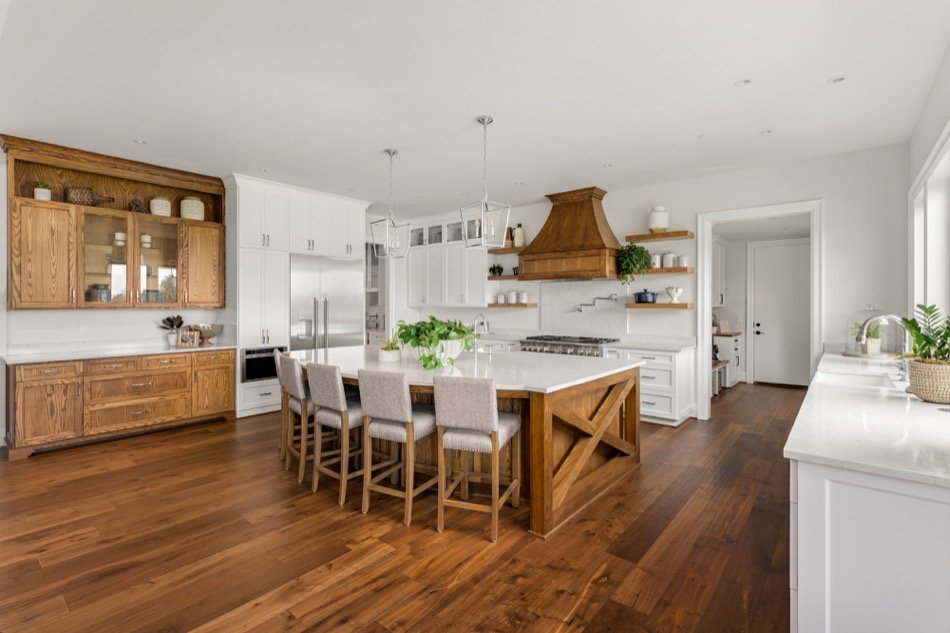The Best Flooring Types for Kitchens
Posted by Gary Ashton on Monday, October 21st, 2019 at 10:11am.
 Kitchen floors are important. They have to stand up to drops, spills, breaks, and more. Because of this, East Nashville homeowners need to choose the right material. There are many great materials to choose from that have different advantages, disadvantages, and price points. Homeowners who are looking to replace their current kitchen floor or choose a flooring type for a new construction home should research all the options thoroughly. Here are some of the tried-and-true kitchen flooring options that will always be solid choices for nearly any kitchen.
Kitchen floors are important. They have to stand up to drops, spills, breaks, and more. Because of this, East Nashville homeowners need to choose the right material. There are many great materials to choose from that have different advantages, disadvantages, and price points. Homeowners who are looking to replace their current kitchen floor or choose a flooring type for a new construction home should research all the options thoroughly. Here are some of the tried-and-true kitchen flooring options that will always be solid choices for nearly any kitchen.
Vinyl Flooring
Vinyl is a popular choice for many rooms including the kitchen due to its durability and affordability. Vinyl is soft, so homeowners can walk barefoot on it and still be comfortable, but it’s firm and easy to clean if anything spills on it. Homeowners like to use vinyl in homes and specifically kitchens because it comes in many different patterns, colors, and textures. It can fit into any setting, and it can even look like other materials. Homeowners who love the look of hardwood floors but don’t have the budget to afford them can instead choose vinyl that looks like hardwood.
Hardwood Flooring
Hardwood flooring is a well-loved and classic flooring option that fits perfectly into kitchens. It’s fairly durable, but in the event that it does get scratched up, it can be refinished to look like new. While hardwood flooring is a more expensive choice than others, it does increase the value of a home. Because hardwood is wood, homeowners will need to be careful about spills when using it in a kitchen. If water spills onto the floor, it should be wiped up as soon as possible to avoid warping. Other than that, hardwood floors do very well in kitchens.
Bamboo Flooring
Bamboo is another wood option, but unlike hardwood, it’s quite a bit more affordable. Bamboo is also a more environmentally friendly option when compared to hardwood because it takes a lot shorter of a timespan for bamboo to grow to a point where it can be harvested for use in floors compared to hardwoods. While bamboo isn’t quite as durable as hardwood, it’s still quite durable, so homeowners won’t have to worry about it getting damaged after dropping something onto it.
Tile Flooring
Homeowners who value durability over all may be interested in tile floors. Tile is an extremely versatile option. Like vinyl, it can be molded and colored to have countless different patterns and shades, so homeowners can easily find something to match their home. Tile floors are also much more durable than many other common options like vinyl and hardwood. If cared for properly, it can easily last 50 years or more. However, if the tile does crack, it can be very difficult and costly to replace.
Concrete Flooring
A recent fad, concrete floors have been showing up in industrial-style kitchens as floors, countertops, and even chair seats. Concrete is an inexpensive option, but if the homeowner wants special finishes, the price will be more expensive. It’s also extremely durable due to its intended purpose being to support cars and houses. While concrete may not be a traditional flooring option, it’s a stylish and modern choice that will definitely be a talking point when guests come to visit the home.
These are just some of the different flooring options that homeowners can consider for their home’s new kitchen floor. For more information about these and other options, be sure to consult a flooring expert at a local hardware store.

Gary Ashton
The Ashton Real Estate Group of RE/MAX Advantage
The #1 RE/MAX team in the World!
